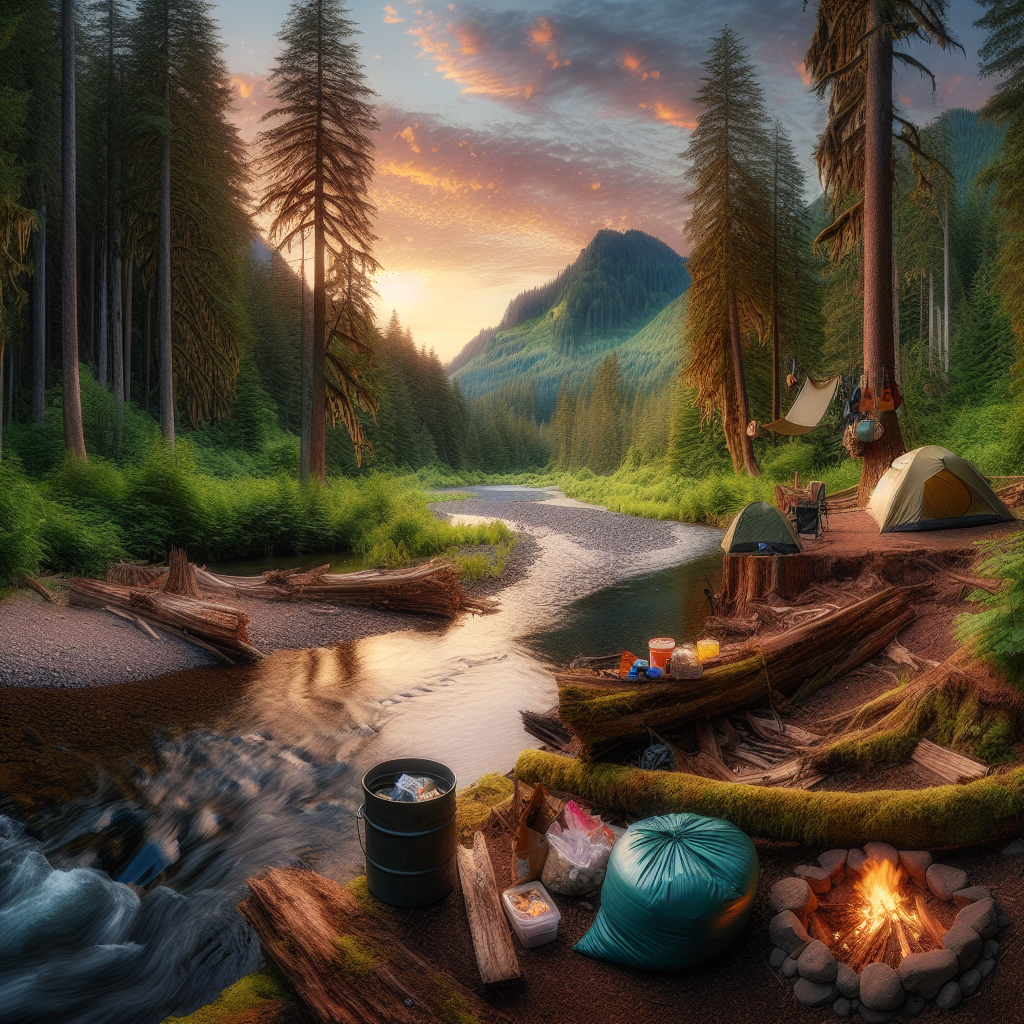##Unleash the Camper within: Wild Camping Rules and Best Practices in Oregon
Whispering evergreens, stunning Pacific coastlines, snow-capped mountains, and arid desert scapes – Oregon is one vast playground for wild camping aficionados. However, with great beauty comes great responsibility. Campers in Oregon must prioritize respecting the land to protect the state’s natural splendors. So, for budding free spirits looking to explore the great outdoors, here are some wild camping rules and best practices to ensure a perfect Oregonian adventure.
###Understand the Rules of Leave No Trace
Oregon’s abundant natural beauty is a kind of luxury, a privilege that deserves our utmost care. Leave No Trace camping embodies an ethos that minimizes human impact on the environment. It is a gentle reminder that we are transient visitors to the wilderness.
Core principles include both obvious and subtle actions. Keep campsites clean by packing out all trash, keeping fires small, and avoiding the use of soap in freshwater sources. Eternal Echo Lake, for instance, is an enthralling spot for camping, known for its crystal-clear water. However, experts and locals alike caution against using the lake water for washing. Instead, collect water and wash at least 200 feet away from any water sources.
###Choose Your Camping Spot Wisely
Before setting up a tent, consider the potential impact on the environment. This rule applies to every location, whether it’s the rugged coastline or the high desert lands. When camping in Oregon’s lovely Siuslaw National Forest, for example, camp at least two hundred feet away from lakes and streams to protect riparian areas.

Seek established campsites to minimize the impact on the land. Along the Pacific Crest Trail, there are beautiful spots already established by fellow campers. Camping in these spots instead of creating new ones keeps the wilderness pristine for longer.
###Fire Safety: A Crucial Consideration
Many adventurers underestimate the fundamentals of fire safety. Wildfires are a serious and frequent concern, particularly in the drier trails around the Mount Hood National Forest or on the arid eastern side of the state. Therefore, a few reminders are essential: keep fires small, never leave them unattended, and ensure they are properly extinguished before leaving the campsite.
If camping in areas like the tide-flanked Tillamook Head or the wind-kissed Coast Range mountains, keep in mind that coastal weather can change swiftly in the afternoon. This unpredictable climate can pose fire challenges, so it’s often safer to use portable camp stoves.
###Respect Wildlife and their Habitat
Across Oregon, you’ll encounter diverse wildlife like Roosevelt elk in the Willamette Valley, sea lions along the Oregon Coast, or rainbow trout in Crater Lake. Always remember to keep a respectful distance and never feed them human food. Any item, even food scraps, left behind can cause wildlife to become accustomed to human presence. This familiarity often leads to problematic, even dangerous behaviors.
###Seasonal Considerations While Camping in Oregon
Camping in Oregon is a year-round affair, with each season providing a unique experience. However, it’s essential to prepare accordingly for different weather conditions.
Spring is heralded as a great time to explore coastal regions like Cape Kiwanda or trails around Columbia River Gorge due to the mild temperatures and smaller crowds. Summer brings booming wildflower blooms, making Mount Pisgah near Eugene an ideal campground.
Come fall, the crisp, cool weather brings in a wave of vibrant scenic beauty, with McKenzie River being a popular choice for camping near lush deciduous forests. Winters can be harsh, especially in the Cascade Range, with camping typically advised in low-lying areas like the Umpqua River. Regardless of the time of year, always check weather forecasts before setting out on a camping trip.
###Avoid the Tourist Traps
Lastly, it’s no news that Oregon sports some famous landmarks, but their popularity often leads to overcrowding. Instead of camping at busy tourist spots, opt for hidden gems like Cottonwood Canyon State Park or the magnificent Anthony Lake.
###Endnote
So, there it is, nestled in these nuggets of wisdom, a guide to wild camping in Oregon. Respect the land, prepare for all conditions, relish every moment, and always leave nature as you found it, if not better! Be aware, though, wild camping in Oregon can plant a seed that grows into a lifelong love affair with the outdoors.
Remember, every thoughtfully placed footstep you take in Oregon’s wilderness ensures that future generations will also marvel at the snow-capped peaks of Mount Hood, the serene depths of Crater Lake, and the coastal beauty of Cape Kiwanda. Isn’t it a beautiful legacy to leave behind? So what are you waiting for? Grab that backpack and start exploring the wild, spirit-lifting beauty that’s Oregon. Just remember, tread lightly, camp responsibly, and let the call of the wild guide you.
